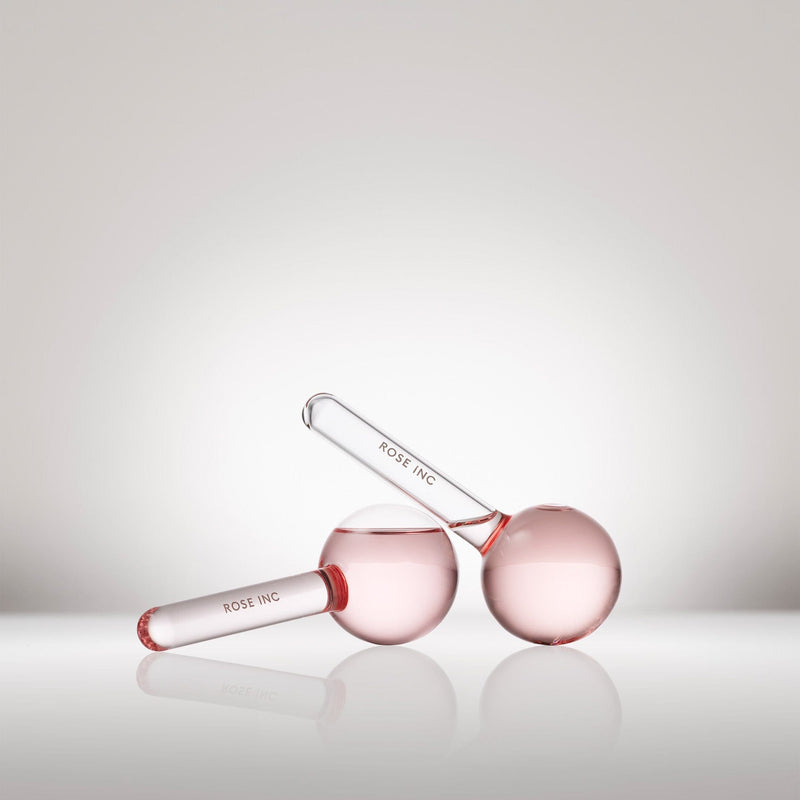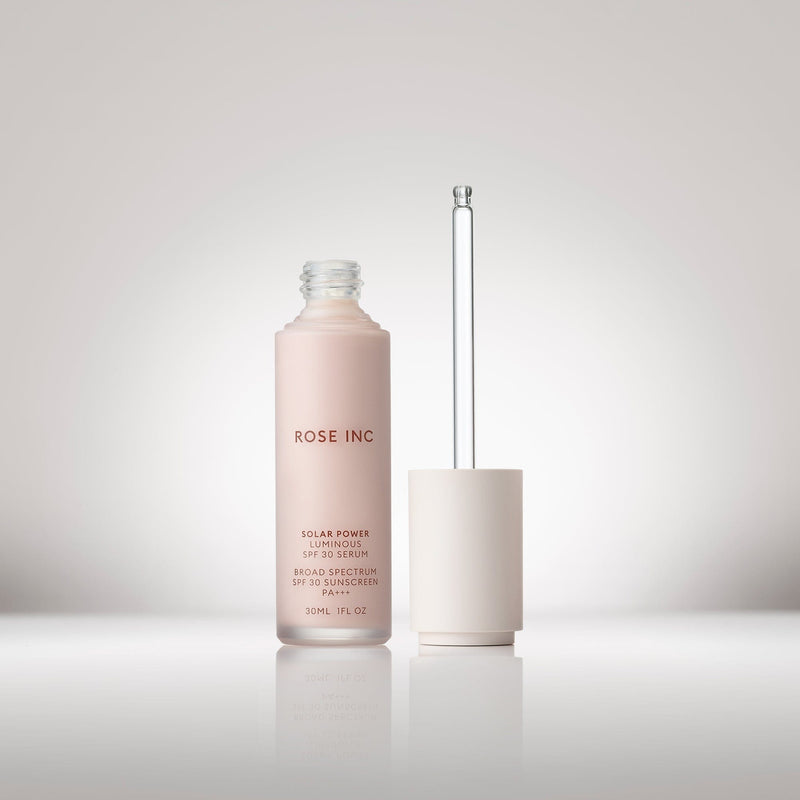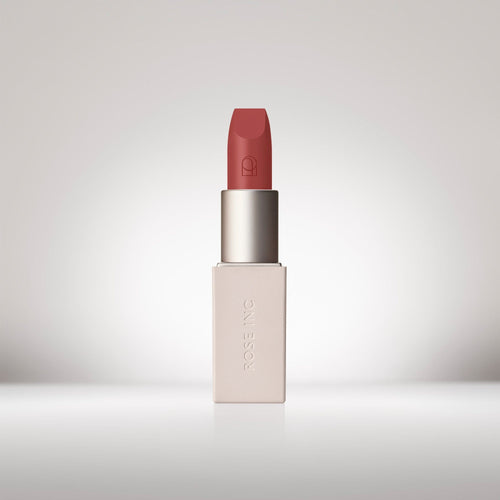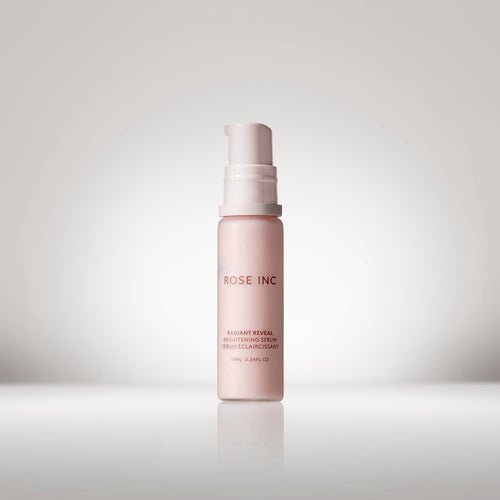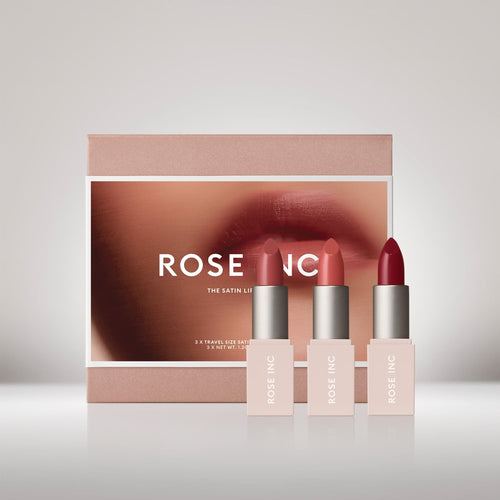Can layering the wrong products cause inflammation and skin imbalance? Rose Inc. investigates.
No days off. Rise and grind. Go hard. The hustle culture that dominates social media and statement tees is everywhere, right down to our skin-care routines. Thanks in part to elaborate K-beauty-inspired skin-care regimens and à la carte actives designed for cocktailing at home, a ‘doing the most’ approach to skin-care has not only culminated in overflowing shelfies, but in many cases, overtreated skin.
Collections
Product Type
Filter
- SHOP
- EXPLORE
Collections
- Body Care
- New
- Bestsellers
- Sets
Product Type
- Makeup
- Skincare
- Brushes/Tools
- Travel
Filter
- By Benefit
-
-
Top Sellers
Shop all
About US
- OUR STORY
- INGREDIENTS
- SUSTAINABILITY
- RECYCLING GUIDE
Editorial
- New
- Profile
- Education
- Tutorial
- RHW SHORTLIST
Search By Category
Popular Searches

Softlight Skin-Smoothing Liquid Foundation
A medium-buildable foundation with a smooth, soft-matte finish.
31N
Deep with Neutral Undertone
30W
Deep with Warm Red Undertone
29N
Deep with Neutral Red Undertone
28W
Deep with Warm Golden Undertone
27C
Deep with Cool Red Undertone
26N
Deep with Cool Red Undertone
25W
Deep with Warm Golden Undertone
24W
Medium-Deep with Warm Olive Undertone
23C
Medium-Deep with Cool Pink Undertone
22N
Medium-Deep with Neutral Undertone
21W
Medium-Deep with Neutral Undertone
20N
Medium-Deep with Neutral Golden Undertone
19N
Medium-Deep with Neutral Undertone
18W
Medium-Deep with Warm Golden Undertone
17C
Medium with Cool Pink Undertone
16W
Medium with Warm Olive Undertone
15N
Medium with Neutral Golden Undertone
14W
Medium with Warm Peach Undertone
13N
Medium with Neutral Undertone
12C
Medium with Cool Neutral Undertone
11W
Medium with Warm Golden Undertone
10N
Light-Medium with Neutral Olive Undertone
9W
Light-Medium with Warm Peach Undertone
8N
Light with Neutral Undertone
7C
Light with Cool Pink Undertone
6W
Light with Warm Golden Undertone
5N
Light with Neutral Undertone
4W
Light with Warm Golden Undertone
3N
Fair with Neutral Undertone
2N
Fair with Neutral Olive Undertone
1C
Fair with Cool Pink Undertone
31N
Deep with Neutral Undertone
Softlight Skin-Smoothing Liquid Foundation
Medium Coverage, brightening, balancing

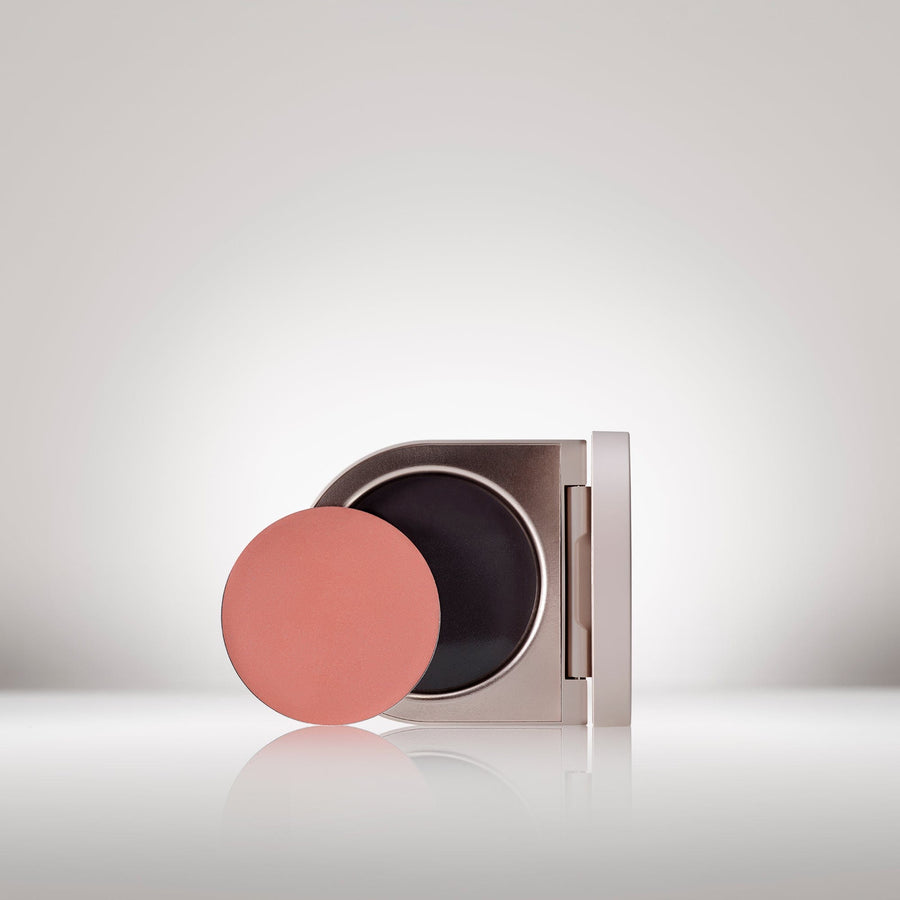
Cream Blush Refillable Cheek &
A hydrating cream that brightens and blurs with a radiant...
Hydrangea
Light cool pink
Wisteria
Coral pink
Anemone
Coral
Heliotrope
Apricot
Delphine
Muted peach
Daylily
Rich taupe
Foxglove
Warm terracotta
Ophelia
True pink
Camellia
Mauve
Hibiscus
Bright plum
Azalea
Berry
Dahlia
Deep berry
Hydrangea
Light cool pink
Cream Blush Refillable Cheek & Lip Color
Brightening, blurring and longwearing

Softlight Luminous Hydrating Concealer
A does-it-all concealer that brightens, blurs and contours while nourishing...
LX 200
Very Deep Skin Tone, Neutral Undertone
LX 190
Very Deep Skin Tone, Cool Red Undertone
LX 180
Deep Skin Tone, Warm Neutral Undertone
LX 170
Deep Skin Tone, Golden Undertone
LX 160
Deep Skin Tone, Red Undertone
LX 150
Deep Skin Tone, Neutral Undertone
LX 140
Medium/Deep Skin Tone, Neutral Undertone
LX 130
Medium/Deep Skin Tone, Warm Golden Undertone
LX 120
Medium/Deep Skin Tone, Pink Undertone
LX 110
Medium/Deep Skin Tone, Golden Undertone
LX 100
Medium/Deep Skin Tone, Peach Undertone
LX 090
Medium Skin Tone, Olive Undertone
LX 080
Medium Skin Tone, Pink Undertone
LX 070
Medium Skin Tone, Golden Undertone
LX 060
Medium Skin Tone, Peach Undertone
LX 050
Light/Medium Skin Tone, Neutral Undertone
LX 040
Light/Medium Skin Tone, Golden Neutral Undertone
LX 030
Light Skin Tone, Pink Undertone
LX 020
Light Skin Tone, Peach Undertone
LX 010
Fair Skin Tone, Neutral Undertone
LX 200
Very Deep Skin Tone, Neutral Undertone
Softlight Luminous Hydrating Concealer
Medium coverage, brightening, blurring


Skin Enhance Luminous Tinted Serum
A hydrating skin tint that delivers powerful skincare and sheer,...
140
Very Deep Skin Tone/Red Undertone
130
Deep Skin Tone/Neutral Undertone
120
Deep Skin Tone/Red Undertone
110
Deep Skin Tone/Golden Undertone
100
Medium Deep Skin Tone/Golden Undertone
090
Medium Deep Skin Tone/Olive Undertone
080
Medium Tan Skin Tone/ Peach Undertone
070
Medium Skin Tone/Peach Undertone
060
Medium Skin Tone/ Neutral Undertone
050
Medium Skin Tone/ Pink Undertone
040
Light to Medium Skin Tone/ Neutral Undertone
030
Light Skin Tone/ Warm Golden Undertone
020
Light Skin Tone/Warm Peach Undertone
010
Fair Skin Tone/ Cool Pink Undertone
140
Very Deep Skin Tone/Red Undertone
Skin Enhance Luminous Tinted Serum
Sheer Coverage, illuminating, hydrating
Search By Category
Popular Products
Categories
-
Education
A primer on essential beauty topics, from talc contamination to biodegradability.
-
Profile
Everybody has a story about beauty. Some of the world’s most intriguing people share theirs.
-
Tutorials
Expert beauty advice to inform and inspire.
-
A primer on essential beauty topics, from talc contamination to biodegradability.
-
Everybody has a story about beauty. Some of the world’s most intriguing people share theirs.
-
Expert beauty advice to inform and inspire.

How Actives in Skincare Really Work
EducationCould those who diligently research, shop for, and layer numerous products in hopes of achieving their perfect skin—nicknamed ‘skintellectuals’—instead be cultivating congestion, irritation, inflammation, and an otherwise imbalanced complexion? As the pandemic has shifted focus away from professional treatments, how easy is it to master the art of balancing actives like a pro? And better still, can one achieve better skin by adjusting accordingly? Rose Inc. investigates.

CAN HAPHAZARD LAYERING DO MORE HARM THAN GOOD?
In short, yes.“There’s a natural tendency to layer actives with hopes that there is a cumulative effect, but it’s important to know which actives work together and which can cancel each other out,” says Beverly Hills-based dermatologist Dr. Onyeka Obioha, M.D. “Additionally, too many actives can result in irritation.”
The tendency to overdo it with skin-care actives to the point of creating a skin imbalance is more common than you’d think, says Dr. Leslie Baumann, M.D, a cosmetic dermatologist who authors textbooks on cosmeceutical ingredients. “I see this a lot,” she says. “People use too much of the wrong ingredient, or with the wrong products or in the wrong order.”
So what exactly is an active ingredient and how many can one safely use? Like the terms "clean" and "comedogenic,” there's no set definition for "active ingredients" in beauty. For framework, we turn to Dr. Baumann, who has written textbooks on the subject. “For me, it means these ingredients have a biologic activity or scientific method of action that has been proven,” she says. That means anything from green tea (the polyphenols of which has been shown to be rich in skin-protecting antioxidants) to retinoids (proven to inhibit collagen degradation and to promote collagen production) can be thought of as "active". As for the latter question, “there is no specific limit on the number of actives one’s skin can handle,” says Dr. Charlene DeHaven, FACEP, M.D., a pioneer in anti-aging medicine who serves as Clinical Director at iS Clinical by Innovative Skincare. “However, there is a limit on how much product activity one’s skin can handle before injury occurs and the skin objects with a reaction or complication.”
Those with more melanin-rich skin can be particularly susceptible to some complications, like hyperpigmentation. “It’s even more important in skin of color to ease your way into actives and to pair them properly, as irritation and inflammation translates into an overproduction of melanin (i.e. dark spots) in melanin-rich skin,” Dr. Obioha says. “The worst thing you can do is cause more dark spots while trying to treat dark spots which can occur as a result of too much irritation.”
Acne, dryness, flaking, congestion, and redness count as additional skin woes that can result from improperly layering ingredients, but it’s also worth noting that filler ingredients (like fragrance, dyes, and propylene glycol) can cause allergic reactions or hives in some. Same goes for some preservatives (such as thiomersal, which can be listed as merthiolate, thimerosal, vitaseptol; and to a lesser degree, parabens, according to research).
Clean Beauty. Science-Backed. Made for You.





INCORRECT LAYERING CAN KILL EFFICACY
Another drawback of layering too many products is the risk of decreasing how well they work. “Active ingredients combine and change each other, so some combinations are good and some are bad,” says Dr. Baumann. “It’s like a dinner party: You can have guests that compliment each other or guests that don’t and cause conflict.” To continue Baumann’s analogy, the more actives you invite to the party, the less time your skin will get with each guest. “The effect is diluted because the active cannot penetrate as well and get to the target receptors,” she says.
To complicate matters, some active ingredients are known to amplify delivery of others, which can be a good or bad thing, depending on which ingredients they’re paired with. Though skin reactions vary considerably by skin type, Dr. Baumann provides this example: “Hyaluronic acid usually increases penetration of water soluble ingredients like green tea and vitamin C, which is good, but also increases penetration of skin lighteners, retinoids, and benzoyl peroxide, which can increase [their] side effects.”
Clean Beauty. Science-Backed. Made for You.

WHEN IN DOUBT, CONSULT A PRO
While it may seem tempting to cocktail trendy single-active products—like pure L-ascorbic acid and niacinamide powders or 2% salicylic acid in witch hazel, for example—to limit filler ingredients and save money, an expertly curated routine might still be a better investment over time.
“A complex or lengthy regimen is not required for beautiful skin,” says Dr. DeHaven. “A few well-chosen products made with the best ingredients possible can be combined into a minimalistic regimen that gives healthy, beautiful skin.” And when in doubt? “It’s beneficial to seek advice from a known and trusted skin-care professional.”
Photographs by Nikki Cruz.
Clean Beauty. Science-Backed. Made for You.







